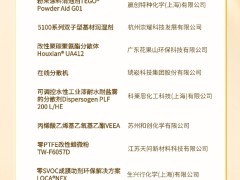这个全新太阳能装置被称为光电化学电池,它将卤化物钙钛矿半导体与电催化剂集成在一个单一、可扩展的装置中,利用太阳能将水分解成氢气和氧气
该装置的一个关键创新是使用抗腐蚀屏障,保护廉价的卤化物钙钛矿半导体不受水的损害,同时不妨碍电子的传递,克服了以前水不稳定性的挑战
这一突破性技术在将太阳能转化为电力的化学反应中具有广泛的应用潜力,可将原料转化为燃料,利用太阳能收集的电力
据油价网7月29日报道,莱斯大学的工程师们已经创造了一种“将阳光转化为氢气”的装置,其效率创下了历史新高。该装置将新一代的卤化物钙钛矿半导体与电催化剂集成在一个耐用、成本效益高且可扩展的装置中。这项技术有望成为氢气技术的新标准。事实上,该装置是一个以太阳能驱动的水分解电池。
根据发表在《自然通讯》杂志上的一项研究,该装置实现了20.8%的太阳能转化效率,而且这项研究结果目前并不需要付费即可访问。
这项新技术对清洁能源来说是向前一大步的突破,可以在一个平台用太阳能收集的电力将原料转化为燃料。
化学与生物分子工程师阿迪蒂亚·莫希特(Aditya Mohite)领导的实验室使用了一种防腐蚀屏障,将半导体与水隔离开来,而不会阻碍电子的传递。
该研究的主要作者之一,化学与生物分子工程博士生奥斯汀·费尔(Austin Fehr)评论说:“能否将阳光作为制造化学品的能源来源是清洁能源经济的最大障碍之一。我们的目标是构建经济可行的平台,能够产生太阳能源衍生燃料。在这里,我们设计了一个能够吸收光并在其表面完成电化学水分解化学反应的系统。”
该装置被称为光电化学电池,因为光的吸收、其转化为电力以及使用电力来驱动化学反应都在同一装置中进行。到目前为止,利用光电化学技术生产绿氢的效率较低,并且半导体成本较高。
费尔补充说:“所有这种类型的装置都是利用太阳能和水产生绿氢的,但我们的装置之所以特别,是因为它具有突破历史新高的效率,并且使用的半导体非常便宜。”
莫希特实验室及其合作者通过将竞争激烈的太阳能电池转变为反应器,利用收集的能量将水分解为氧气和氢气。他们需要克服的挑战是卤化物钙钛矿在水中极不稳定,而用于隔离半导体的涂层最终要么破坏其功能,要么损坏它们。
迈克尔·王(Michael Wong)是莱斯大学的化学工程师,也是该研究的合著者之一,他指出:“在过去的两年里,我们不断尝试不同的材料和技术。”在经过漫长的试验后未能得到预期结果后,研究人员最终找到了一个成功的解决方案。
费尔说:“我们的关键是需要两层屏障,一层用于阻挡水,另一层用于在钙钛矿层和保护层之间建立良好的电气接触。”“我们的结果是光电化学电池在没有太阳能聚焦的情况下具有最高效率,并且对于使用卤化物钙钛矿半导体的电池整体效果最好。”
费尔说:“对于这个历来由价格昂贵半导体主导的领域来说,这是第一次取得这样的成果,可能代表了这类装置首次实现商业可行性的途径。”
研究人员展示了他们的屏障设计在不同反应和不同半导体上的工作情况,使其适用于许多系统。
莫希特说:“我们希望这样的系统能成为一个平台,利用丰富的原料和太阳光作为能源输入,驱动各种电子转化为燃料反应。”
费尔补充说:“随着稳定性和规模的进一步改进,这项技术可能会开启氢能经济,并改变人类从化石燃料制造物品的方式,转向太阳能燃料。”
这项工作充满了乐观情绪。然而,我们需要记住,一块顶级的太阳能收集器在一天中最佳情况下只能接收到每平方米约100瓦的电力。人们的疑惑是:在一个小众市场上,免费的氢气会有多大用处。
这项技术还处于起步阶段。它能走多远还有待进一步的研究和工程化改进。但即使在20.8%的太阳能驱动水分解效率下,还有很长的路要走。
该研究的主要作者包括莱斯大学的研究生阿尤什·阿格拉瓦尔(Ayush Agrawal)和法兹·曼达尼(Faiz Mandani),以及美国国家可再生能源实验室的部分作者。该实验室是由可持续能源联盟(Alliance for Sustainable Energy LLC)为美国国家能源部运营的,合同号为DE-AC36-08GO28308。
胡耀东 译自 油价网
原文如下:
Green Hydrogen Gets Greener With Record-Breaking Solar Device
The solar device, known as a photoelectrochemical cell, integrates halide perovskite semiconductors with electrocatalysts in a single, scalable device that can split water into hydrogen and oxygen using solar energy.
A key innovation of the device is the use of an anti-corrosion barrier that protects the cheap halide perovskite semiconductor from water, without hindering the transfer of electrons, overcoming previous challenges with water instability.
The breakthrough technology could have broad applications in driving chemical reactions that convert feedstocks into fuels using solar-harvested electricity.
Rice University engineers have created a device that “turns sunlight into hydrogen” with record-breaking efficiency. The device integrates next-generation halide perovskite semiconductors with electrocatalysts in a single, durable, cost-effective and scalable device. The press release believes the engineers have set a new standard for hydrogen technology. The device is factually a solar driven water splitting cell.
According to a study published in Nature Communications, the device achieved a 20.8% solar-to-hydrogen conversion efficiency. Today the study is not behind a paywall.
The new technology is a significant step forward for clean energy and could serve as a platform for a wide range of chemical reactions that use solar-harvested electricity to convert feedstocks into fuels.
The lab of chemical and biomolecular engineer Aditya Mohite built the integrated photoreactor using an anticorrosion barrier that insulates the semiconductor from water without impeding the transfer of electrons.
Austin Fehr, a chemical and biomolecular engineering doctoral student and one of the study’s lead authors commented, “Using sunlight as an energy source to manufacture chemicals is one of the largest hurdles to a clean energy economy. Our goal is to build economically feasible platforms that can generate solar-derived fuels. Here, we designed a system that absorbs light and completes electrochemical water-splitting chemistry on its surface.”
The device is known as a photoelectrochemical cell because the absorption of light, its conversion into electricity and the use of the electricity to power a chemical reaction all occur in the same device. Until now, using photoelectrochemical technology to produce green hydrogen was hampered by low efficiencies and the high cost of semiconductors.
“All devices of this type produce green hydrogen using only sunlight and water, but ours is exceptional because it has record-breaking efficiency and it uses a semiconductor that is very cheap,” Fehr added.
The Mohite lab and its collaborators created the device by turning their highly-competitive solar cell into a reactor that could use harvested energy to split water into oxygen and hydrogen. The challenge they had to overcome was that halide perovskites are extremely unstable in water and coatings used to insulate the semiconductors ended up either disrupting their function or damaging them.
Michael Wong, a Rice chemical engineer and co-author on the study noted, “Over the last two years, we’ve gone back and forth trying different materials and techniques.” After lengthy trials failed to yield the desired result, the researchers finally came across a winning solution.
“Our key insight was that you needed two layers to the barrier, one to block the water and one to make good electrical contact between the perovskite layers and the protective layer,” Fehr said. “Our results are the highest efficiency for photoelectrochemical cells without solar concentration, and the best overall for those using halide perovskite semiconductors.
“It is a first for a field that has historically been dominated by prohibitively expensive semiconductors, and may represent a pathway to commercial feasibility for this type of device for the first time ever,” Fehr said.
The researchers showed their barrier design worked for different reactions and with different semiconductors, making it applicable across many systems.
Mohite said, “We hope that such systems will serve as a platform for driving a wide range of electrons to fuel-forming reactions using abundant feedstocks with only sunlight as the energy input.”
“With further improvements to stability and scale, this technology could open up the hydrogen economy and change the way humans make things from fossil fuel to solar fuel,” Fehr added.
There is a great deal of optimism in this work. Yet we need to remember that a top of the line solar collector at best of day is only going to see about 100 watts of power incoming per square meter. One has to ask just how useful is free hydrogen going to be in a niche market.
The technology is very much at its beginning. How far it can go is yet to be researched and engineered out somewhat more. But even at 20.8% solar driven water splitting efficiency there is a very long way to go.
Rice graduate students Ayush Agrawal and Faiz Mandani are lead authors on the study alongside Fehr. The work was also authored in part by the National Renewable Energy Laboratory, which is operated by Alliance for Sustainable Energy LLC for the Department of Energy under Contract DE-AC36-08GO28308.
免责声明:本网转载自其它媒体的文章及图片,目的在于弘扬石化精神,传递更多石化信息,宣传国家石化产业政策,展示国家石化产业形象,参与国际石化产业舆论竞争,提高国际石化产业话语权,并不代表本网赞同其观点和对其真实性负责,在此我们谨向原作者和原媒体致以崇高敬意。如果您认为本站文章及图片侵犯了您的版权,请与我们联系,我们将第一时间删除。







